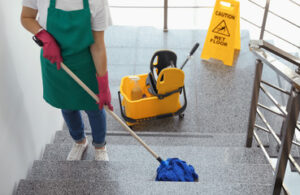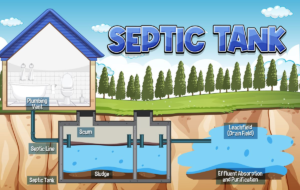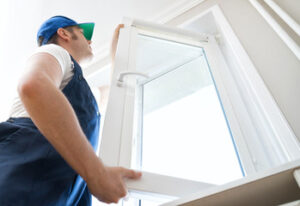Piers lift and stabilize a foundation, transferring the weight of your home to load-bearing soil. Typically, the process is simple, efficient, and cost-effective.

However, pier installation is not without its challenges. Common access limitations include sidewalks, driveways, porches and decks, trees next to the house, plumbing drain lines, and large air conditioning units. Click Here for more information.
Foundation piers are the best solution for stabilizing and raising your home, whether you have sinking walls, a bowing foundation or other structural damage. The process begins by excavating the area around your foundation and removing any shrubbery that may be in the way. Next, the piers are installed. Once completed, the soil that was removed is backfilled and any landscaping can be replaced.
Before starting any work, contractors will examine the foundation and surrounding area to make sure that your home is in need of a pier installation. They will use tools such as a laser level to locate the areas where the settlement is occurring and the cause of it. Once this is complete, the experts can begin working on a solution.
In many cases, the reason for a sinking or settled foundation is due to water and soil conditions. Red clay soil expands when it is wet and contracts when dry, causing movement that can cause the foundation to sink or shift. This type of movement can be exacerbated by poor drainage that causes soil to wash away.
When a pier is used to repair this type of issue, the experts will dig a hole beneath your foundation and install a helical deck pier or push pier under your foundation. The pier is then screwed into the ground using a hydraulic pump. This method of piering is effective because it transfers the weight of your house to more stable ground layers, like bedrock or stronger soil strata, rather than relying on unstable, shifting soil underneath your foundation.
Another option for stabilizing your foundation is a steel slab pier, which uses a hydraulic system to drive a steel shaft into the ground, much like a screw. This process is done on a job-by-job basis and requires more excavation than a push or helical pier, but it can be an effective and long-lasting solution for your settling or sinking foundation. This type of pier can also be installed in homes with basements, as it can transfer the weight of your home to stable ground levels.
Concrete
Concrete piers are a long-lasting foundation solution that require little to no maintenance. They are also able to handle a variety of environmental conditions, including high moisture levels and harsh weather. They can even be made to resist corrosion from chemicals and salts. This makes them a great choice for areas with high rainfall or coastal regions. Concrete is a strong material that can help to support your home or building, and it can also be used to reinforce existing structures. It is a great choice for areas with poor soil conditions, as it can help to increase bearing capacity and improve ground stability.
When your home is sinking into the ground, a slab pier may be the best option for you. This type of underpinning bolsters and strengthens the structure by driving galvanized steel piers past unstable soil and into deeper, stable earth that can support your foundation and lift it back to its original level position. This solution can help to repair cracks and gaps in the foundation, eliminate tripping hazards, and restore your property value.
Historically, people built their own piers using concrete. This process required digging a hole that was about 24 inches in diameter and then pouring a concrete footing. It was important to use the right type of concrete, as it had to be able to bear a heavy load. The concrete must also be poured to the proper thickness, as a mistake could weaken the pier and cause it to fail.
Today, most piers are constructed of pre-mixed concrete, which is more efficient and effective than concrete that is poured on site. A professional will measure the height of the building, determine how many piers are needed, and then fill each of the holes with pre-mixed concrete that is reinforced with steel. It is crucial to ensure that each pier is placed at the correct depth, which requires a builder’s optical level or transit.
The number of piers that are needed to support your home or building can affect the price of the project. In general, a contractor will provide you with an estimate for the number of piers that will be installed and will include them in your quote so there are no surprises once the work begins. The location of the house or building is another factor that can impact pier installation costs, as some regions have different soil compositions that may require piers to be driven at deeper depths than others.
Raising
When the piers are in place, a crawl space can be created under the house. This makes it easier to access plumbing, sewage and electrical lines. It also allows for moisture damage to be inspected and repaired.
The next step is to install beams perpendicular to the piers. These can be made of treated lumber, concrete or steel. Once the beams are in place, it’s important to check their levelness with a spirit level. This can be done from inside or outside the home.
A major part of a pier and beam foundation is the soil it sits upon. A pier and beam foundation is more susceptible to settlement problems if the soil surrounding the home is loose or sandy. However, a problem with the foundation can occur even if there are no loose or sandy soils around it if poor drainage is present.
If the soil underneath a pier and beam foundation is not properly compacted, it can cause a lot of pressure on the structure. This pressure can force the foundation to sink or shift and may create other problems, such as uneven floors or cracks in walls and ceilings. If this happens, it’s best to hire a professional for a pier and beam repair.
In addition to a proper soil condition, it’s also important that the pier and beam foundation be watertight. This can be accomplished by installing a drain system that directs water away from the foundation. This prevents water from pooling around the foundation, which can increase the pressure on it. It can also lead to wood-eating pests like termites attacking the wooden piers.
Another way to protect a pier and beam foundation is by adding a water filtration system. This helps to prevent water and contaminants from entering the basement or crawl spaces.
If you’re having a pier and beam foundation installed, it’s a good idea to talk to the company about setting up a drainage system to help protect the pier from water and other contaminants. This may include a French drain or a tile drainage system. This will keep the soil around your foundation dry and reduce the chances of it becoming muddy, which can lead to ruts that can damage the pier and cause the foundation to settle or shift again.
Leveling
A pier-supported foundation raises and stabilizes a home, but it doesn’t necessarily level the building. This is because the piers aren’t attached to the foundation, and they don’t have the same load-bearing capacity as the concrete slab. It’s possible to level a pier-supported house, but it isn’t usually necessary or recommended.
After the piers are installed, your foundation repair contractor will make a visual examination of the cracks in the walls and stucco, and then take floor elevation measurements. This step is important because it allows the foundation repair expert to see whether or not the piers have lifted your home back to its original position. If not, they will need to lift it further.
Most homes built on a slab foundation will experience settling over time, which is why most homeowners consider a pier and beam foundation. This type of foundation is a more stable alternative because it lifts your home above the ground, eliminating the possibility of flood and moisture damage. It also creates enough space beneath your home for workers to access utility lines like plumbing, sewage and electrical. This is also helpful in reducing the risk of pests entering your home through damaged foundation walls or crawl spaces.
If your slab foundation has sunk, you may need to have helical piers installed. These piers are effective because they don’t depend on the strength of your foundation footing, but rather on the density of the soil underneath. This makes them an excellent choice for foundations with damaged or missing footings.
Once the helical piers are installed, you can proceed with other foundation repairs. This can include repairing cracks in the walls, installing waterproofing measures and encapsulating your crawl space. Once your foundation is repaired, you’ll have a stronger, more reliable home that’s more energy-efficient and has fewer problems with insects and other pests.
A pier-supported foundation is a permanent part of your house, but that doesn’t mean it won’t need maintenance from time to time. This is particularly true if you live in an area that experiences high levels of rainfall or flooding. When this occurs, water tends to seep into the soil around your foundation, re-hydrating it and potentially causing it to sink or shift.







